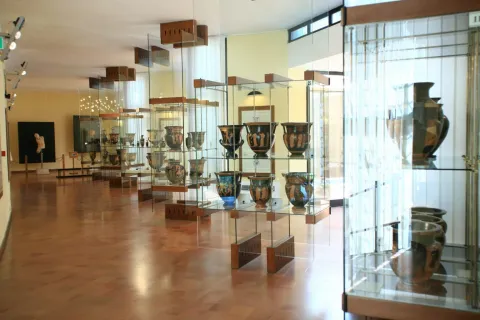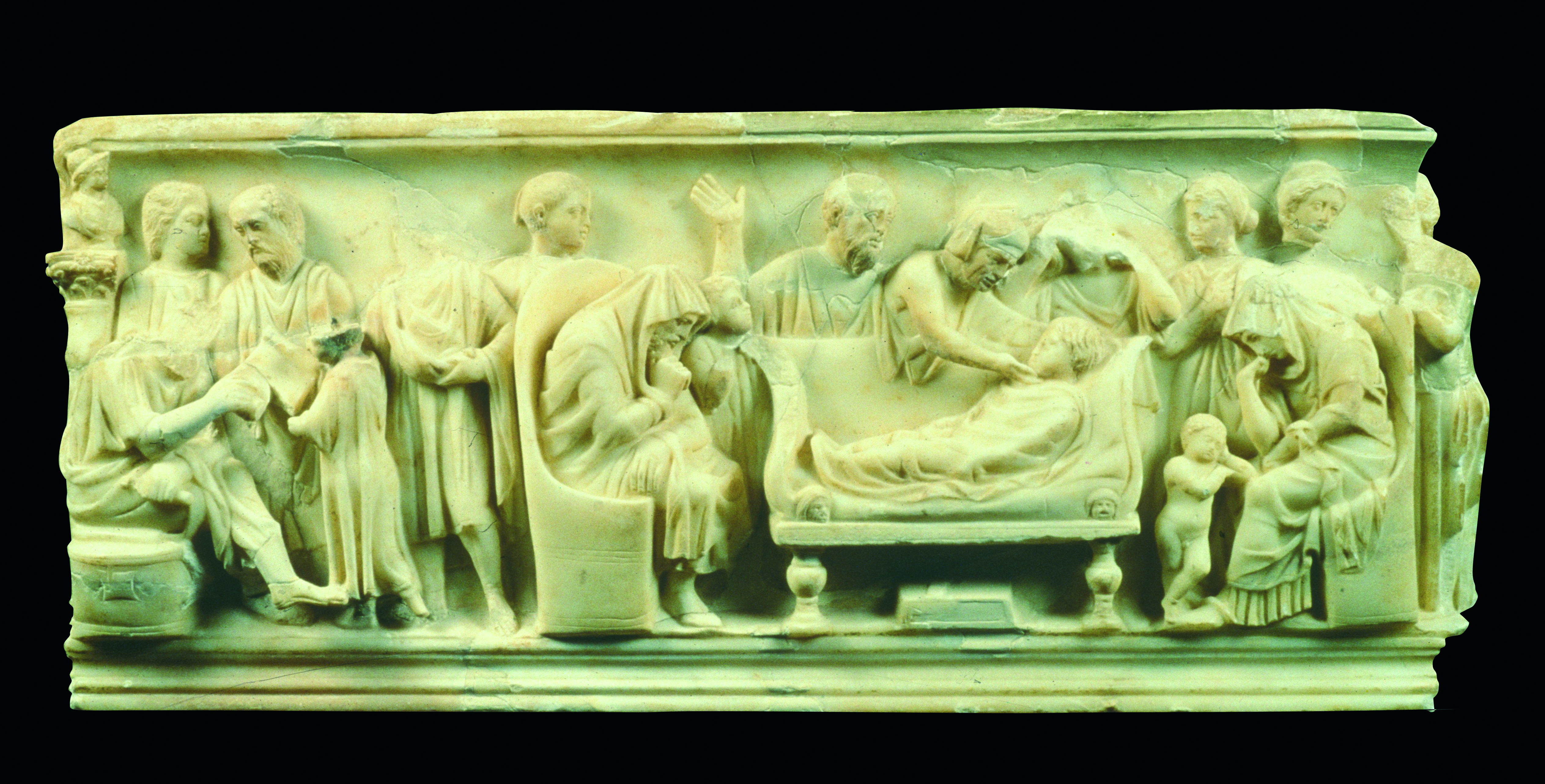Last updated
24/06/2025, 15:46
The child's sarcophagus, probably originating from the Roman necropolis located on the southern side of the hill of temples, is a finely carved marble work decorated on three sides. When it was found, it underwent careful and meticulous restoration as it was discovered in fragments. Dating back to the Hadrianic period (early decades of the 2nd century AD), it features an extremely realistic scene on the front right side depicting the death of a child: the little boy is lying on a bed, surrounded by his parents with their heads veiled and bowed in grief, along with other mourning figures. Among these, a man with his hands raised in mourning and a woman leaning over the child and tenderly caressing his face stand out.
On the left, the child is depicted alive, during a lesson at school. The side decorations show two significant moments in his life: on the right, his first bath, with his mother watching over the newborn; on the left, the child playing on a small cart pulled by a sheep, accompanied by two figures in the background. The latter scene has been interpreted symbolically as the child's final journey to the realm of the dead.
| Type of artwork | Funerary element |
|---|---|
| Material | Marble |
| Measurements | |
| Placement |

The first rooms showcase the art and craftsmanship of Akrágas from prehistory to the early Middle Ages. The heart of the itinerary is the Telamon from the Temple of Zeus.
Scopri di più24/06/2025, 15:46



